Advertisements
Advertisements
प्रश्न
In the figure, chords AE and BC intersect each other at point D. If AD = BD, show that AE = BC.
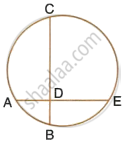
उत्तर
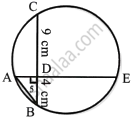
Join AB.
If AD = BD ...(i)
We know that:
AD × DE = BD × DC
But AD = BD
Therefore, DE = DC ...(ii)
Adding (i) and (ii)
AD + DE = BD + DC
Therefore, AE = BC
APPEARS IN
संबंधित प्रश्न
AB and CD are two equal chords of a circle with centre O which intersect each other at right
angle at point P. If OM⊥ AB and ON ⊥ CD; show that OMPN is a square.
In the following figure, O is the centre of the circle. Find the values of a, b, c and d.
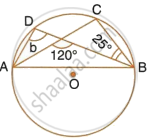
In the following figure, O is centre of the circle and ΔABC is equilateral.
Find:
- ∠ADB,
- ∠AEB.
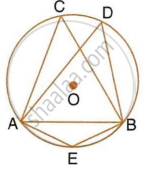
Given: ∠CAB = 75° and ∠CBA = 50°. Find the value of ∠DAB + ∠ABD.
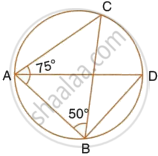
The sides AB and DC of a cyclic quadrilateral ABCD are produced to meet at E; the sides DA and CB are produced to meet at F. If ∠BEC = 42° and ∠BAD = 98°; Calculate :
(i) ∠AFB (ii) ∠ADC
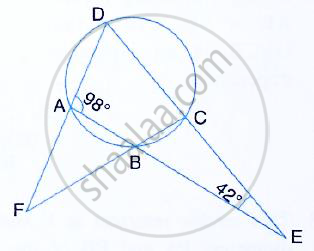
The line joining the midpoints of two chords of a circle passes through its center.
Prove that the chords are parallel.
Given two equal chords AB and CD of a circle with center O, intersecting each other at point P.
Prove that:
(i) AP = CP
(ii) BP = DP
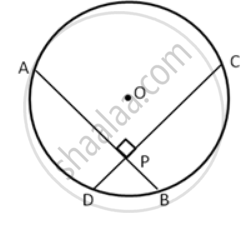
If a diameter of a circle bisects each of the two chords of a circle, prove that the chords are parallel.
Two chords AB, CD of lengths 16 cm and 30 cm, are parallel. If the distance between AB and CD is 23 cm. Find the radius of the circle.
AB and CD are two chords of a circle such that AB = 6 cm, CD = 12 cm and AB || CD. If the distance between AB and CD is 3 cm, find the radius of the circle.
